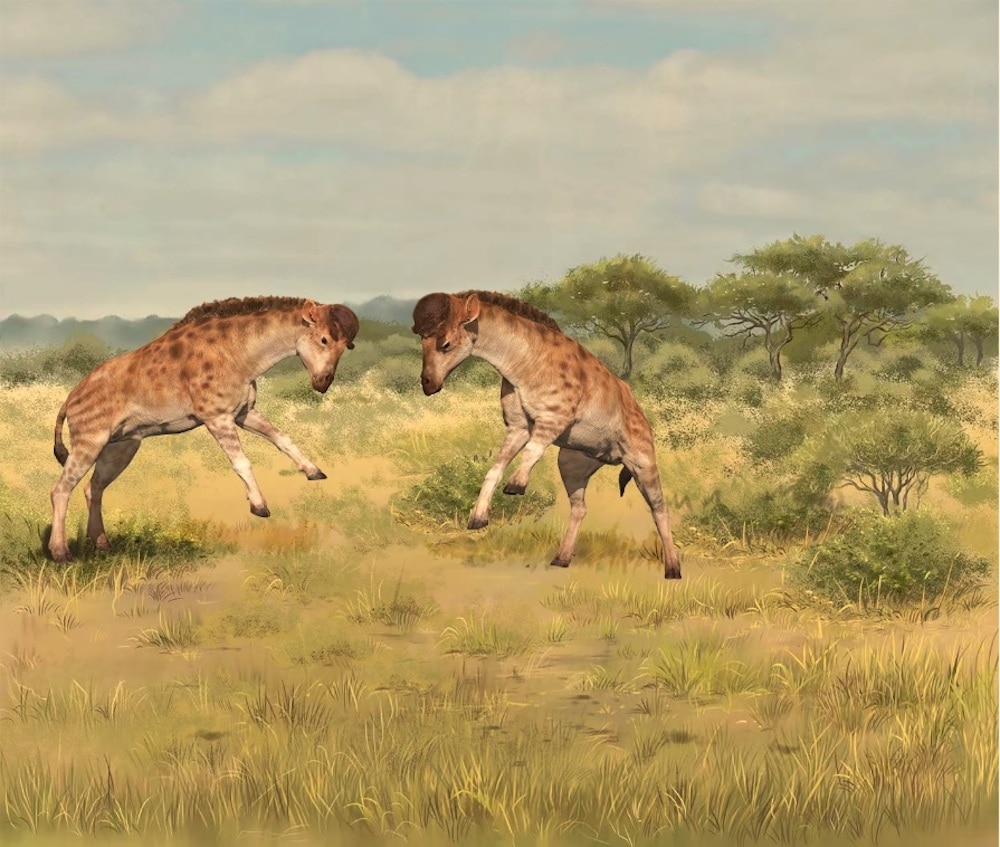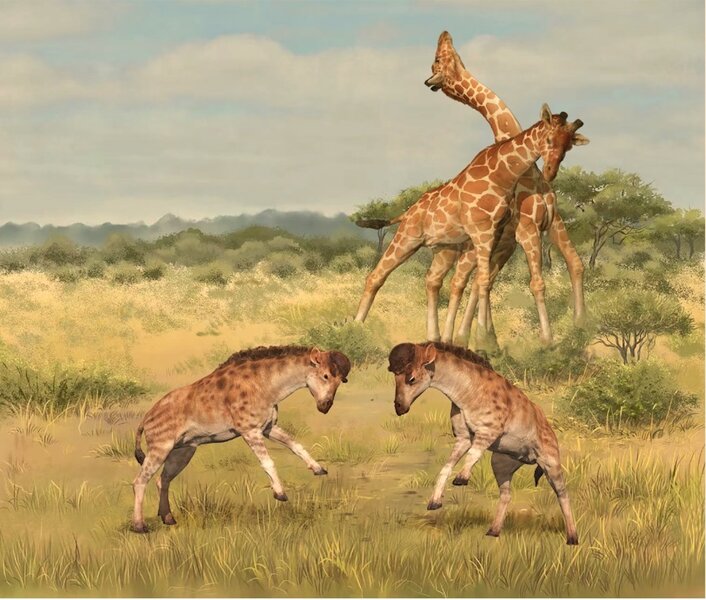Create a free profile to get unlimited access to exclusive videos, sweepstakes, and more!
These proto-giraffes had built-in helmets for headbutting
When you have to grow your own bone helmet, you know life is going to be rough.

In the 2005 animated film Madagascar (now streaming on Peacock!) a diverse group of animals finds themselves on a ship heading for a Kenyan nature preserve but, through a bit of happenstance and some intervention from a group of penguins, they find themselves washing ashore the island nation of Madagascar.
Owing to their relatively cushy life at the Central Park Zoo, each of them has to learn to cope with living in this new environment, but none of them are more at odds with living in the wild than Melman, a habitually nervous giraffe with hypochondria.
In the real world, giraffes are formidable animals equipped with a killer kick and long necks, which they use to do battle with one another, in addition to foraging high foliage. According to new research, those adaptations may have gotten a strange start in a recently discovered species of giraffoid.
Shi-Qui Wang from the Institute of Paleontology and Paleoanthropology at the Chines Academy of Scientists, and colleagues, describe the new species known as Discokeryx xiezhi, in a recent paper published in the journal Science.
The first fossilized bones of D. xiezhi were uncovered in a remote desert of northern China in 1996 and since then a total of 18 specimens have been found. Their remains are largely fragmented, consisting mostly of vertebrae, but teeth, mandibles, and skull fragments have also been uncovered. Their bones paint a picture of a stubby, nearly unrecognizable primitive giraffe with a penchant for violence.
“At the time, forests were a major environment and grasslands were new, but we think this animal moved out of the forests and into the grasslands. Isotopes in the tooth enamel suggests living in an open area, not in the forest,” Wang told SYFY WIRE.
Their preferred habitat, however, might be the least unusual thing about them. Looking at their bones reveals they were highly adapted for absorbing blunt force trauma to the head. Reconstructions of the animal conjure images of decades-old leatherheads squaring up to collide with one another while tossing around a football, and that’s not far from the truth.
The atlanto-occipitalis — the connection between the base of the skull and the vertebra — is highly enlarged, offering a more robust connection point between the skull and the top of the spine. Furthermore, each of the vertebral connection points are wider and thicker.
“In a normal animal, they are very small and rotate, but in this animal, you have additional area which is very thick. They form a complicated articulation between the skull and vertebrae. They are all enlarged, it’s strong and helpful for energy absorption,” Wang said.
The increased surface area at the base of the skull and at each of the vertebral connection points would have helped to more evenly distribute force across a wider area, allowing these animals to take serious knocks to the head without serious damage.
While there has been some debate about the selective pressure behind the long necks of modern giraffes — whether they adapted purely as a means of foraging, through sexual selection, or some other means — scientists believe the morphology of D. xiezhi might provide added evidence for the sexual selection model. It makes a sort of sense in the case of D. xiezhi, for better or for worse fighting is an effective way of presenting mating prowess in the wild.
“No other animal shows this morphology. We think it evolved very fast and may have been promoted by sexual selection. We think modern giraffes may have had a similar evolutionary model, also promoted by sexual selection,” Wang said.
Modern giraffes don’t have the same impressive headgear or reinforced vertebrae, but they do swing their necks around like a pair of wobbly broadswords to compete with one another. While modern giraffes and their ancient relatives incorporated different adaptations to surviving and reproducing, they are both examples of evolution pushed to its extreme, and it might all be in search of finding a mate in an unforgiving world. It’s almost enough to make you bang your head against a wall, or against the head of a rival.



























